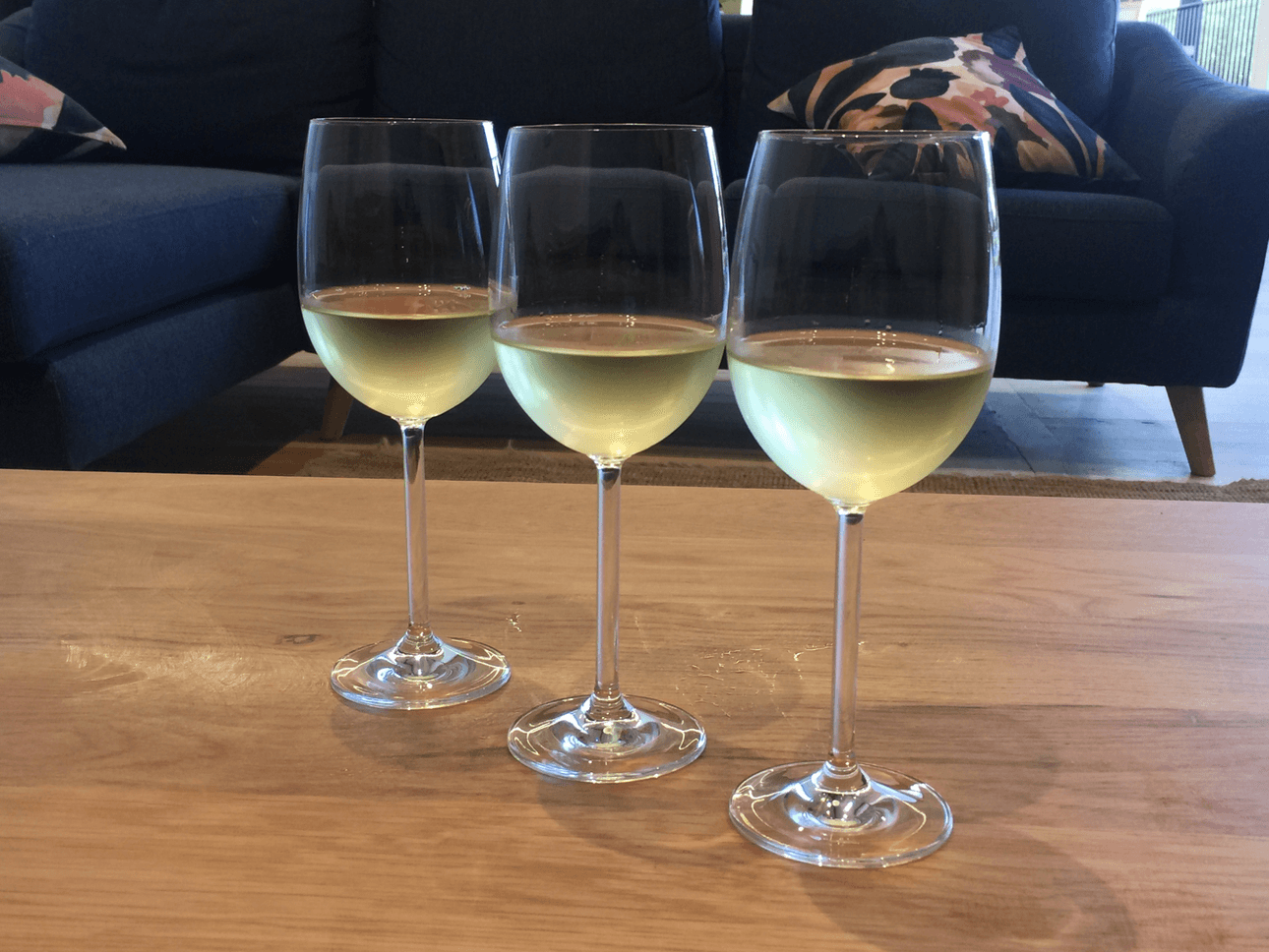These days, chards are far more complex than the buttery, oaky monsters of yore, so dive on in.
If I had a dollar for every time someone told me they don’t like chardonnay, I’d be making a shitload more money than I currently am as a freelance wine writer in a small country.
Chardonnay occupies a weird spot in the wine world. It’s perennially overlooked for super-fashionable wines like pinot gris and rosé, but it’s also somehow perennially in fashion.
It suffers somewhat from an image as a shoulder pad-wearing, fast-talking 80s businesswoman. It’s loud, it’s brash, you know it’s good but you also find it kind of insufferable. At the same time — and particularly in the eyes of hospo people and wine nerds — it’s wearing chunky Balenciaga sneakers and listening to Mitski. It does what fashion tells it, but it also doesn’t care what you think of it.
While a lot of people think of chardonnay as drinking liquid timber, it’s one of the most versatile grapes out there. It’s like a blank canvas for winemakers to play around on, which means it can be rich and lush with heaps of oak, or lean and minerally and begging to be on the table alongside a round of Mahurangi oysters.
The problem is that chardonnay, back while it was still broking high-powered deals in stilettos, winemakers liked to hit it with as much oak as possible.
This means that fruit and quality got left behind as winemakers tried to one-up each other with masses of new oak.
Happily, winemakers have reined it the fuck in. There’s still oak in chardonnay, sure, but it tends to be better integrated, making it taste more like you’re drinking pineapples with buttered toast rather than licking vanilla essence off a tree. There are still oaky examples, because some people learned to love that, but these are easy enough to avoid — there will be tips later, I promise.
New Zealand chardonnay tends to have a lot of zingy green-apple-and-citrus acidity alongside its more sedate stonefruit and butter flavours. This marks us out as a country where making wine is quite new — they’ve been making it since at least Roman times in France, and much earlier in other parts of the world.
But our inexperience breeds innovation and enthusiasm, and I really like New Zealand’s style of chardonnay, and its regional variations.
The obvious starting point is the Hawke’s Bay and Gisborne, where some of our most famous chardonnays come from. The style here is big and buttery, with producers like Clearview Estate and Sacred Hill making some classic New World styles that hark back to the glory days of chardonnay. Millton, up the road in Gisborne, makes an ever-so-slightly more restrained chardonnay that will preach very effectively to the choir.
If you are afraid of big bad chardonnay but are still willing to try, the South Island will serve you a little better. The best place to start is Marlborough, where the cooler climate makes a leaner wine, giving flavours of green apple and citrus along with vanilla and peaches. Producers like Seresin, Dog Point and Nautilus know what they are doing when it comes to chardonnay, producing lush, focused wines where all of a sudden you’ve finished the bottle and are brainstorming with your guests about the best way to speed-chill a wine.
There are also great chardonnays made on Waiheke and in Kumeu, just west of Auckland, as well as in Nelson and Martinborough. Outside of New Zealand, Australia and California make some alarmingly buttery bad boys, while France, the home of the grape, makes everything from fresh, crisp quaffers to white Burgundies that sell for thousands of dollars a bottle.
My biggest piece of advice for people who are still teaching themselves to like chardonnay is to NOT buy an expensive wine. Top-shelf wines are usually more concentrated, more intensely flavoured, and are often full of oak, making them too much for someone who is just starting out on their journey of discovery. Colby and Roquefort are years away from each other in both flavour and price, but goddamn there’s only one of those things a child will actually eat.
The next time you get given a glass of chardonnay, take a bit of time to think about what you’re drinking. Wine is a great icebreaker, so if you’re talking to someone you don’t know very well, it’ll give you at least two to three minutes of solid conversation. Look for flavours like pineapple, apple, peach and nectarine, as well as things like toast, coconut, butter and hazelnut. Consider how it’s different to what you usually like, and think about a situation in which you think you would like it.
And if you still don’t like it, that’s OK! There are so many other wines for you to drink.
The Spinoff’s beverage content is brought to you by Fine Wine Delivery Co, which is completely and utterly devoted to good taste, whether it’s wine, food, craft beer, whisky, rum… Check out their website or pop into one of the two Auckland superstores.

